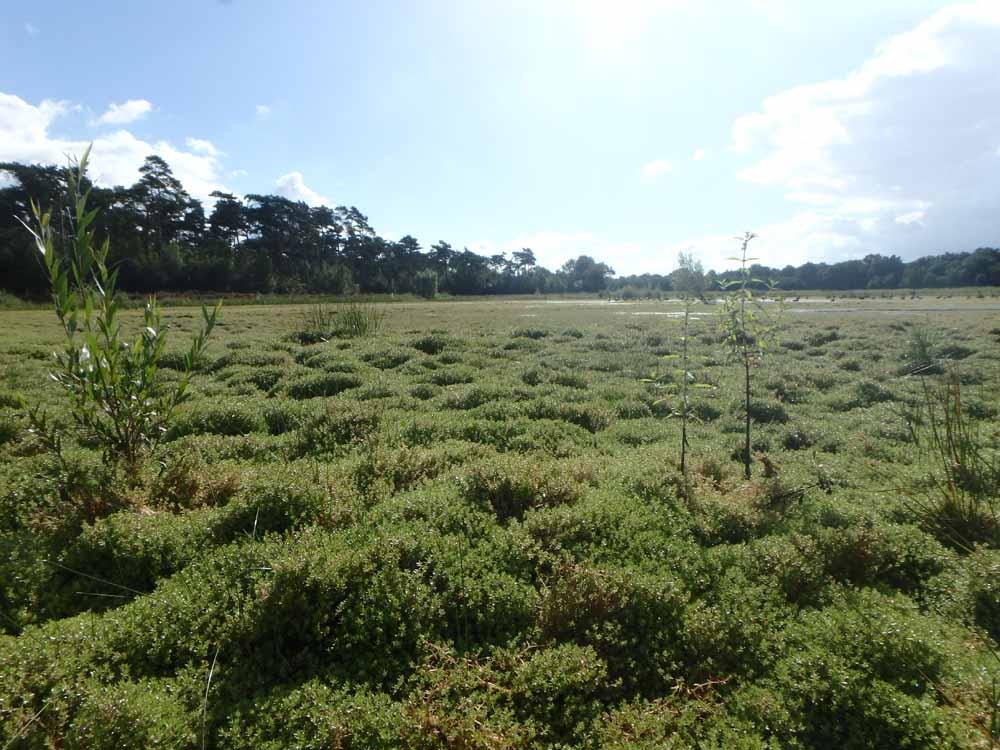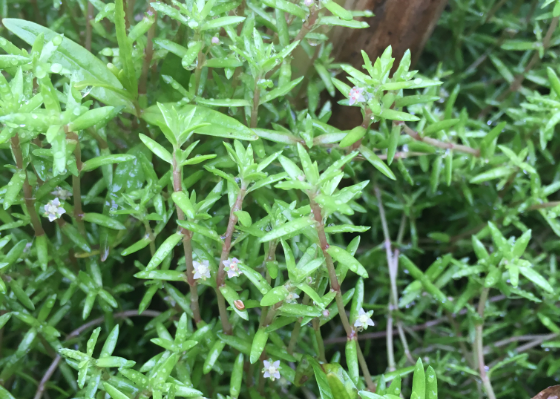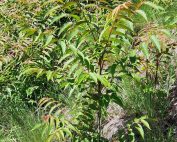



The ecosystem resilience approach in wetlands
A wetland is an area that is situated on the border between land and water. Wetlands are often areas that are sometimes flooded and then dry-out or become marshy again.
In many of these areas, Australian swamp stonecrop and pumpkinseed sunfish are becoming increasingly dominant. In LIFE Resilias we show how to increase the resilience of these systems, and thereby decreasing the dominance of these invasive alien species.
The ecosystem resilience approach in wetlands
Wetlands are often damaged by high atmospheric nitrogen concentrations, acidification, desiccation, and high nutrient inflow from agriculture. As a result, the optimum habitat for native wetland species is disappearing. These disturbances often provide opportunities for invasive alien species. The resilience of wetlands is sometimes further reduced by the fact that nature managers stimulate vulnerable pioneering systems with a low species density (in both vegetation and fish stock) to facilitate protected species such as the natterjack toad. This makes the system more susceptible to the disappearance of native vegetation and predatory fish, whereas these species would be able to compete with invasive alien species such as pumpkinseed and Australian swamp stonecrop. Traditional action against invasive alien species to remove them from these wetlands, is often accompanied by further damage to the native species composition. For example: the use of large equipment or pumping the pools dry also results in the native species to disappear or decrease in number. These damaged systems are than ideal for the recovery and reintroduction of the often still present population of invasive alien species. Resulting in the problem becoming even worse.
Breaking dominance and introducing native competitors
In LIFE Resilias we increase the resilience of wetlands by breaking the dominance of the invasive alien species and then actively encouraging and/or (re)introducing competitive or predatory native species. For example, you can supplement or restore predation pressure on pumpkinseed by introducing predatory fish such as the native pike. And Australian swamp stonecrop can be tackled by planting native plant species such as riparian weeds, which compete for the available nutrients and light. By that you can prevent an Australian swamp stonecrop dominated vegetation.
The ecosystem resilience approach in wetlands
A wetland is an area that is situated on the border between land and water. Wetlands are often areas that are sometimes flooded and then dry-out or become marshy again.
In many of these areas, Australian swamp stonecrop and pumpkinseed sunfish are becoming increasingly dominant. In LIFE Resilias we show how to increase the resilience of these systems, and thereby decreasing the dominance of these invasive alien species.
The ecosystem resilience approach in wetlands
Wetlands are often damaged by high atmospheric nitrogen concentrations, acidification, desiccation, and high nutrient inflow from agriculture. As a result, the optimum habitat for native wetland species is disappearing. These disturbances often provide opportunities for invasive alien species. The resilience of wetlands is sometimes further reduced by the fact that nature managers stimulate vulnerable pioneering systems with a low species density (in both vegetation and fish stock) to facilitate protected species such as the natterjack toad. This makes the system more susceptible to the disappearance of native vegetation and predatory fish, whereas these species would be able to compete with invasive alien species such as pumpkinseed and Australian swamp stonecrop. Traditional action against invasive alien species to remove them from these wetlands, is often accompanied by further damage to the native species composition. For example: the use of large equipment or pumping the pools dry also results in the native species to disappear or decrease in number. These damaged systems are than ideal for the recovery and reintroduction of the often still present population of invasive alien species. Resulting in the problem becoming even worse.
Breaking dominance and introducing native competitors
In LIFE Resilias we increase the resilience of wetlands by breaking the dominance of the invasive alien species and then actively encouraging and/or (re)introducing competitive or predatory native species. For example, you can supplement or restore predation pressure on pumpkinseed by introducing predatory fish such as the native pike. And Australian swamp stonecrop can be tackled by planting native plant species such as riparian weeds, which compete for the available nutrients and light. By that you can prevent an Australian swamp stonecrop dominated vegetation.




Latest news
Movie on invasive alien species
In the short movie below, made by KU Leuven, Bart Nyssen explains the history and properties of Prunus serotina. He also explains the [...]
Information panels have been placed
At the LIFE Resilias demonstration sites, information panels have been placed. Curious? Come take a look! Demonstration sites
Tree of heaven, a pioneer tree species in Italian coppice forest
Fighting tree of heaven in the northern Italian coppice forest shows that repeatedly cutting down the tree of heaven reduces its share in [...]




